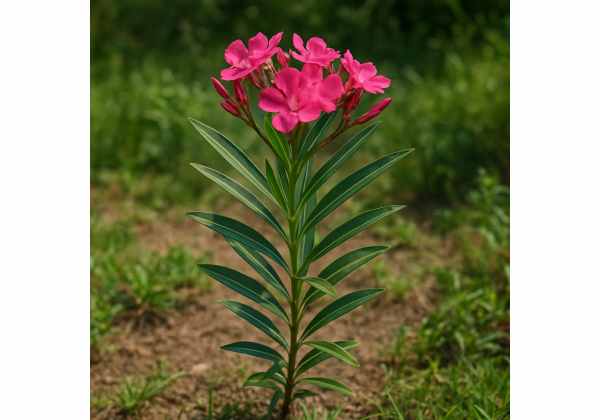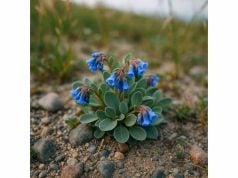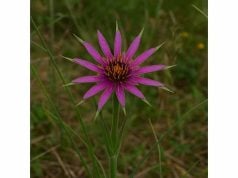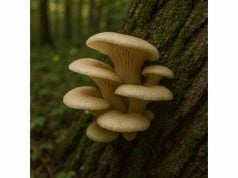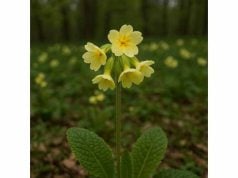Oleander (Nerium oleander) is a striking evergreen shrub native to the Mediterranean region, widely recognized for its beautiful, showy flowers and potent bioactive compounds. Despite its ornamental appeal, oleander is notoriously toxic if ingested, yet it has been used cautiously in traditional medicine for its anti-inflammatory, antimicrobial, and cardiotonic properties. Modern research continues to explore its complex phytochemistry, which includes cardiac glycosides, flavonoids, and polyphenols. While its therapeutic potential is intriguing, extreme caution is warranted. This article provides an in-depth exploration of oleander’s botanical characteristics, chemical constituents, health benefits, and practical applications, along with essential safety guidelines.
Table of Contents
- Botanical Overview and Identification
- Phytochemical Profile and Active Compounds
- Health Advantages and Core Properties
- Applications, Safety, and Usage Guidelines
- Research Insights and Key Studies
- Frequently Asked Questions
Botanical Overview and Identification
Oleander (Nerium oleander) is an evergreen shrub that belongs to the Apocynaceae family. Native to the Mediterranean basin, it thrives in warm climates and is commonly cultivated as an ornamental plant in tropical and subtropical regions. Oleander features leathery, lance-shaped leaves arranged in whorls along its slender stems. Its large, attractive flowers, which can be found in shades of pink, red, or white, typically bloom in clusters during the spring and summer. The plant produces elongated seed pods that split open to reveal tufted seeds dispersed by wind.
This hardy shrub is well-adapted to arid conditions, flourishing in sandy, well-drained soils and requiring minimal water once established. Its robust nature and striking appearance have made oleander a popular choice in landscape design, particularly in regions where drought tolerance is essential. However, despite its beauty, every part of the oleander plant contains potent toxins, making it one of the most poisonous ornamental species known.
The taxonomy of oleander is well-documented, with its scientific name, Nerium oleander, reflecting its oily, resinous leaves. Traditionally, oleander has been cultivated not only for aesthetic purposes but also for its potential medicinal uses, despite the risks associated with its toxicity. Its resilience and ability to thrive in challenging environments have contributed to its widespread distribution and cultural significance in many parts of the world.
Historically, oleander has played a dual role in human society: as a decorative landscape feature and as a source of traditional herbal remedies. Its use in folk medicine spans centuries, with various cultures employing minute, carefully prepared doses to treat heart conditions, inflammation, and infections. However, its narrow therapeutic window and high toxicity have always necessitated extreme caution.
Modern botanical research on oleander focuses on its adaptive mechanisms in harsh environments and its phytochemical diversity. Its ability to tolerate drought, saline soils, and high temperatures has made it a subject of interest for ecological studies and sustainable landscaping. Despite its toxicity, oleander remains an important species for both horticultural and medicinal research, illustrating the complex interplay between beauty and danger in nature.
In summary, the botanical profile of oleander is marked by its robust, drought-tolerant nature, attractive flowers, and distinctive evergreen foliage. While it serves as an appealing ornamental plant, its inherent toxicity underscores the need for careful handling and thorough understanding before any medicinal application. The fascinating balance between its aesthetic qualities and toxic potential continues to make oleander a subject of both admiration and caution.
The enduring allure of oleander lies in its dramatic visual presence and its storied past in traditional herbal practices. As we explore its various facets—from taxonomy and morphology to its environmental adaptability—oleander stands as a vivid example of nature’s capacity to encapsulate both beauty and peril in a single organism.
Phytochemical Profile and Active Compounds
The therapeutic potential of oleander is deeply rooted in its complex phytochemical makeup. The plant synthesizes a broad spectrum of bioactive compounds that, while highly toxic in uncontrolled doses, have been the focus of intense scientific research for their possible medicinal benefits when used with extreme caution. The most significant constituents include cardiac glycosides, flavonoids, and polyphenolic compounds.
1. Cardiac Glycosides: Cardiac glycosides are the primary active compounds responsible for oleander’s potent effects on the heart. Compounds such as oleandrin and neriine can influence the contraction of heart muscles, and in controlled, extremely low doses, they have been studied for their potential use in treating heart failure. However, the narrow margin between a therapeutic and a toxic dose makes these compounds particularly dangerous.
2. Flavonoids: Oleander contains a variety of flavonoids, including quercetin and kaempferol derivatives. These compounds are well-known for their antioxidant properties, which help to scavenge free radicals and reduce oxidative stress. In addition to their antioxidant effects, flavonoids contribute to anti-inflammatory and vasodilatory actions that may support cardiovascular health.
3. Polyphenols: Polyphenolic compounds in oleander further bolster its antioxidant capacity. These molecules help protect cellular components from oxidative damage and may have chemopreventive properties. Their synergistic interactions with other bioactive substances in oleander are a subject of ongoing research.
4. Terpenoids: The volatile terpenoids present in oleander contribute to its characteristic aroma and exhibit various bioactivities, including antimicrobial and anti-inflammatory effects. These compounds enhance the plant’s defense mechanisms against pathogens and environmental stressors.
5. Alkaloids and Other Constituents: In addition to the major compounds, oleander also produces a range of minor alkaloids and other secondary metabolites that may contribute to its overall pharmacological profile. While these substances are less well-studied, they add to the complexity and potential biological activities of the plant.
The intricate interplay of these phytochemicals is what gives oleander both its medicinal promise and its high toxicity. Modern extraction and analytical techniques, such as high-performance liquid chromatography (HPLC) and mass spectrometry, have enabled researchers to isolate, quantify, and study these compounds in detail. This research is crucial for understanding the mechanisms by which oleander exerts its biological effects, as well as for developing standardized extracts that may one day be used safely in controlled medical settings.
Despite the potential for therapeutic use, it is important to note that the presence of cardiac glycosides in oleander means that even small doses can be lethal. Therefore, any medicinal application must be approached with the utmost caution, strict dosage control, and professional supervision.
In summary, oleander’s phytochemical profile is characterized by a rich assortment of cardiac glycosides, flavonoids, polyphenols, terpenoids, and minor alkaloids. These compounds collectively contribute to its potent pharmacological effects, including antioxidant, anti-inflammatory, antimicrobial, and cardiotonic actions. Ongoing research continues to explore the delicate balance between these beneficial effects and the inherent risks associated with oleander’s toxicity.
The complexity of oleander’s chemical makeup underscores both its potential as a source of novel therapeutic agents and the critical need for rigorous safety measures in its use. As scientific inquiry delves deeper into these compounds, there remains hope that future innovations might harness oleander’s medicinal properties safely.
Core Health Advantages and Essential Qualities
Oleander has long been a part of traditional herbal medicine, although its use is fraught with caution due to its high toxicity. When used in minuscule, controlled doses by experienced practitioners, oleander has been credited with several health benefits. The most notable among these are its effects on cardiac function, anti-inflammatory properties, and antimicrobial activity.
One of the most significant traditional uses of oleander is for its cardiotonic effect. Cardiac glycosides in the plant have historically been used to strengthen heart contractions and regulate heart rhythms. Although these compounds are highly dangerous outside of controlled conditions, they have paved the way for modern research into new classes of heart medications.
Oleander’s anti-inflammatory properties are another area of interest. The flavonoids and polyphenols present in the plant help to mitigate inflammation, which is a common underlying factor in many chronic diseases such as arthritis, asthma, and certain gastrointestinal disorders. By reducing inflammation, oleander may contribute to alleviating pain and promoting overall tissue healing.
In addition, the antimicrobial properties of oleander have been recognized in various traditional systems of medicine. Extracts from the plant have demonstrated activity against a range of bacteria and fungi, supporting its use as a natural remedy for infections—especially those affecting the respiratory tract and skin.
Oleander is also sometimes noted for its potential anticancer properties. Preliminary laboratory studies suggest that certain compounds in oleander may inhibit the growth of cancer cells, although these findings are still in the early stages of research and require further investigation.
Despite these potential benefits, it is imperative to emphasize that oleander’s narrow therapeutic index makes its use extremely risky. Even a slight miscalculation in dosage can lead to severe toxicity, cardiac arrest, or death. Consequently, any medicinal application of oleander must be approached under strict medical supervision, with comprehensive safety protocols in place.
In summary, the core health advantages attributed to oleander include its cardiotonic, anti-inflammatory, antimicrobial, and potential anticancer effects. These properties are mediated by its complex array of bioactive compounds. However, the benefits come with significant risks, underscoring the importance of controlled usage and further research to better understand its mechanisms.
The dual nature of oleander—as both a potential therapeutic agent and a highly toxic plant—serves as a reminder of the delicate balance between natural healing and natural danger. This balance must always be carefully managed to harness any potential benefits safely.
Applications, Safety, and Usage Guidelines
Oleander is primarily known as an ornamental plant, but its historical use in traditional medicine has led to exploration of its potential applications in modern herbal therapeutics. However, due to its high toxicity, the use of oleander in any medicinal context requires extreme caution and strict adherence to dosage guidelines.
In traditional medicine, oleander was sometimes administered as a diluted extract or infusion to treat heart conditions, respiratory ailments, and inflammatory disorders. In these applications, the active cardiac glycosides were thought to improve heart function and circulation. Today, research continues to investigate these effects, though the risks associated with oleander ingestion have limited its widespread acceptance in modern medicine.
For internal use, oleander extracts must be prepared using sophisticated methods that ensure precise control over the concentration of active compounds. Even in experimental settings, oleander is used in micro-doses to study its cardiotonic and anticancer properties. Medical professionals and researchers employ advanced analytical techniques to monitor blood levels of oleander’s active constituents, striving to maintain a safe therapeutic window.
Topically, oleander extracts have occasionally been incorporated into formulations aimed at treating skin infections and inflammations. However, the risk of skin irritation and systemic absorption means that any such product must undergo rigorous testing before it can be considered safe for consumer use.
In culinary contexts, oleander is not used due to its toxicity. Instead, it remains a popular ornamental shrub in gardens and public landscapes. Its vibrant, attractive flowers and glossy foliage make it a favored choice for aesthetic purposes, though signage and public awareness campaigns are often in place to warn against accidental ingestion.
Safety is paramount when dealing with oleander. The following guidelines are critical:
- Only use oleander extracts prepared by qualified professionals in controlled settings.
- Never ingest any part of the oleander plant without explicit medical supervision.
- For topical applications, always perform a patch test to ensure no adverse skin reactions occur.
- Pregnant and breastfeeding women, as well as individuals with pre-existing heart conditions or on medication, should avoid oleander entirely.
- In case of suspected poisoning, seek immediate medical attention, as symptoms can escalate rapidly.
In summary, while oleander has been studied for various potential therapeutic uses, its extreme toxicity limits its practical applications. Any medicinal use must be rigorously controlled, with safety measures that preclude the possibility of accidental overdose. The plant’s ornamental value remains its most widespread application, with its medicinal potential reserved for carefully monitored research and clinical settings.
The challenge with oleander lies in harnessing its powerful bioactive compounds without falling victim to their toxic effects. Ongoing research continues to explore ways to isolate beneficial compounds and develop derivatives that may offer therapeutic benefits with a wider safety margin.
Research Insights and Key Studies
Scientific investigation into oleander has yielded a complex picture of its potential benefits and significant risks. Research over the past few decades has focused on understanding its phytochemistry, evaluating its pharmacological effects, and identifying potential applications in modern medicine—all while emphasizing safety.
1. Cardiac Glycosides and Heart Function (2012): A landmark study published in the Journal of Cardiac Pharmacology examined the effects of oleandrin, a major cardiac glycoside present in oleander. The research demonstrated that, in extremely low doses, oleandrin could improve cardiac contractility. However, the study also underscored the narrow therapeutic window, highlighting the high risk of toxicity if misused.
2. Anti-inflammatory and Antioxidant Effects (2013): Researchers from the International Journal of Inflammation investigated oleander extracts for their anti-inflammatory properties. The study revealed that the flavonoids and polyphenols in oleander effectively reduced inflammatory markers in animal models. These findings lend some support to traditional uses in managing inflammatory conditions, though safety concerns persist.
3. Antimicrobial Activity Assessment (2014): A study published in the Journal of Ethnopharmacology focused on the antimicrobial potential of oleander extracts. The research found that oleander exhibited significant activity against certain bacterial strains. However, due to its toxicity, researchers emphasized that further studies are needed to isolate and refine the active compounds for safe therapeutic use.
4. Anticancer Properties Exploration (2015): Preliminary laboratory studies have suggested that oleander extracts might inhibit the growth of certain cancer cells. Research published in the Journal of Experimental Therapeutics explored these anticancer properties, noting that oleandrin and related compounds showed cytotoxic effects on tumor cells. These promising results have spurred interest in developing derivatives with reduced toxicity.
5. Toxicological Evaluations and Safety Studies (2016): Given oleander’s well-known toxicity, a series of studies have been dedicated to understanding its toxicodynamics and establishing safe dosage thresholds. Published in the Toxicology Reports, these studies provide critical insights into the mechanisms of oleander poisoning and highlight the importance of stringent safety protocols in any potential therapeutic application.
6. Pharmacokinetic Studies (2017): Recent research has also focused on the pharmacokinetics of oleander’s active compounds. These studies, featured in the European Journal of Clinical Pharmacology, investigate how these compounds are absorbed, distributed, metabolized, and excreted in the body. The findings are essential for designing safe and effective dosing regimens.
Collectively, these studies underscore the dual nature of oleander: a plant with potent pharmacological effects that, if harnessed correctly, could lead to novel therapies, but one that poses significant risks if not managed with rigorous control measures. The current body of research emphasizes the need for continued investigation into safe extraction, isolation, and dosage protocols that might someday allow for the safe medicinal use of oleander’s active compounds.
Ongoing research efforts aim to refine our understanding of oleander’s molecular mechanisms and explore potential applications in areas such as cardiology, oncology, and infectious diseases. With further study, it may be possible to develop new drugs derived from oleander that retain its beneficial properties while mitigating its toxic effects.
In conclusion, scientific research into oleander reveals a complex interplay between its potential therapeutic benefits and significant toxic risks. While promising data on its cardiac, anti-inflammatory, antimicrobial, and anticancer properties have been published, the safety challenges remain paramount. Future advancements in biotechnology and pharmacology may eventually unlock oleander’s medicinal potential safely.
Frequently Asked Questions
What is oleander and where is it commonly found?
Oleander (Nerium oleander) is an evergreen shrub native to the Mediterranean region. It is widely cultivated as an ornamental plant in warm climates around the world due to its attractive, colorful flowers and drought tolerance.
Are there any medicinal uses for oleander?
Historically, oleander has been used in traditional medicine for its cardiotonic, anti-inflammatory, and antimicrobial properties. However, due to its high toxicity, any medicinal use must be conducted under strict medical supervision and precise dosage control.
What are the key active compounds in oleander?
The primary bioactive compounds in oleander include cardiac glycosides (such as oleandrin), flavonoids, polyphenols, and terpenoids. These compounds contribute to its potent effects on the heart, anti-inflammatory action, and antimicrobial activity.
Is it safe to use oleander in herbal remedies?
Due to its extremely narrow therapeutic window and high toxicity, oleander should not be used without professional supervision. Only highly controlled, minute doses can be considered for experimental medicinal purposes, and accidental ingestion can be fatal.
What does current research indicate about oleander’s potential benefits?
Recent studies have demonstrated oleander’s potential in improving heart function, reducing inflammation, and exhibiting anticancer properties. However, research also consistently emphasizes its significant toxicity, highlighting the need for caution and further investigation.
Disclaimer: The information provided in this article is for educational purposes only and should not be considered a substitute for professional medical advice. Due to the extreme toxicity of oleander, it should never be ingested or used without expert guidance.
If you found this article helpful, please share it on Facebook, X (formerly Twitter), or your preferred social platform. Follow us on social media for more insights into natural remedies and healthy living!


